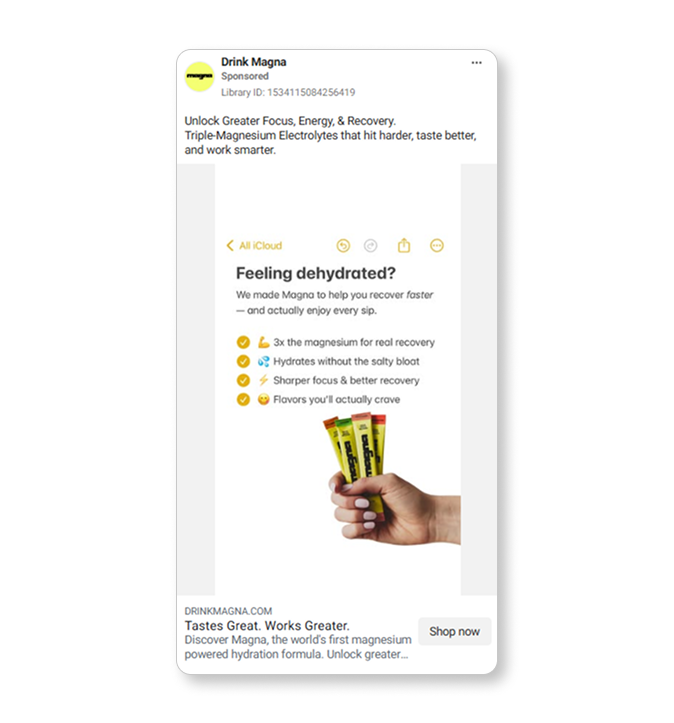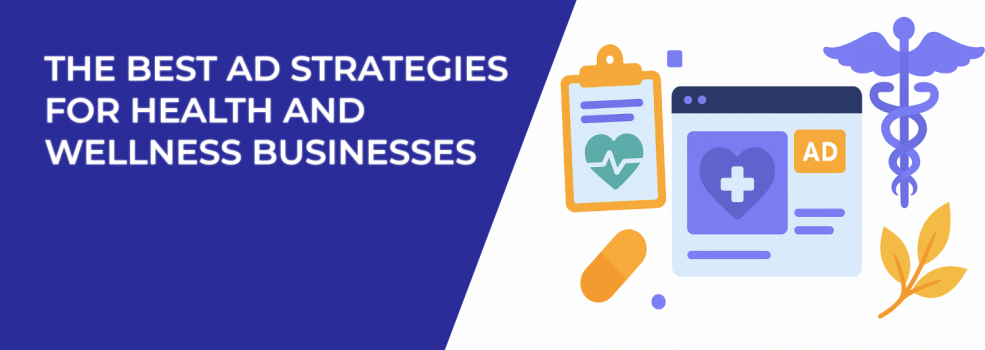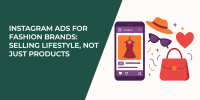Running ads in the health and wellness space isn’t like running ads for sneakers or coffee mugs. You’re dealing with people’s energy levels, their confidence, their aging bodies — and sometimes even their pain.
It’s personal.
So it makes sense that the usual one-size-fits-all ad playbook won’t cut it. What works for SaaS or fashion won’t always work here — especially when you’re selling supplements, sleep programs, fitness plans, or stress-reduction tools.
Let’s go beyond surface-level tactics. These are the ad strategies that actually move the needle in this niche — the kind built for long-term trust and profitable scaling.
1. Don’t Just Sell the Product — Sell the Transformation (with Proof)
People in this market aren’t buying collagen. They’re buying the hope that they’ll feel energetic again, that their skin will look better in the mirror, or that they’ll stop waking up in pain.

But abstract promises don’t work anymore. You need visual, believable transformation assets, such as:
-
Real customer timelines (e.g., “What Sarah noticed after 7, 14, and 30 days”);
-
Side-by-side symptom tracking visuals;
-
Journal-style testimonials broken into phases (e.g., “Week 1: Noticed better sleep…”).
Avoid exaggerated before-and-afters — instead, focus on relatable, credible outcomes. Document progress through charts, simple visuals, and direct quotes. Include friction points, too — they build trust.
Expert tip: Use UGC-style creatives that document progress through video diaries. Not influencers — real users.
Learn more about health product compliance in Running Facebook Ads for Supplements and Health Products: What to Know.
2. Build Audience Trust Using Tiered Content Campaigns
Wellness buyers aren’t always ready to purchase on the first touch — especially if you're solving chronic or complex issues like gut health, hormone balance, or anxiety. Trust must be earned over time.

Use tiered campaign sequencing:
-
Top of Funnel (TOF): Educational content — short videos, reels, or carousels covering common issues, misconceptions, or myths;
-
Middle of Funnel (MOF): Soft trust-builders — customer reviews, product explainers, expert interviews, and outcomes without the hard CTA;
-
Bottom of Funnel (BOF): Conversion offers — trials, bundles, discounts, or time-limited programs.
Map this journey inside your Meta Ads structure. Structure matters more than most marketers realize — especially in complex customer journeys.
For help building these layers, explore Facebook Ad Funnel Strategy: From Audience Identification to Conversion.
3. Create Audience Segments Based on Symptom Type, Not Just Demographics
The real segmentation edge in health and wellness isn’t demographic — it’s symptomatic.

If you sell a general wellness solution (e.g., magnesium, adaptogens, or coaching), try segmenting your audience by what they're trying to fix:
-
Poor sleep;
-
Burnout or fatigue;
-
Hormonal imbalance;
-
Anxiety or mood swings.
Then match creative directly to those pain points. Ads that say “Feel better” are vague. Ads that say “Still waking up tired, even after 8 hours?” are precise.
Use quiz funnels, opt-ins, or lead magnets to tag audiences by symptom type. Then serve highly targeted retargeting creative that reflects their journey.
Bonus: Segment by stage of awareness — are they symptom-aware, problem-aware, or solution-aware?
Learn more in Using Life Events and Behaviors for Smarter Facebook Targeting.
4. Align Product Complexity with Funnel Entry Point
Some wellness offers are low-friction — like a $15 sleep tea. Others are high-consideration — like a $199 hormone protocol.
Your funnel strategy must reflect this. For high-ticket or multi-step purchases, don’t send cold traffic to a checkout page. Use pre-offers, such as:
-
A wellness quiz with tailored supplement suggestions;
-
A free 5-day challenge (great for fitness, detox, or stress tools);
-
A “Symptoms 101” email series.
Each of these can collect emails, segment users, and prepare them for deeper content. Then — once they’re warmed up — you retarget with sales-focused messaging.
Want to refine segmentation? Try Interest Stacking: A Powerful Method for Facebook Audience Segmentation.
5. Use Value-Based Lookalikes — Not Just Broad LALs
This is one of the most overlooked opportunities. Most marketers create lookalikes from “All Customers” or “Purchasers.” But in wellness, some customers spend $30 once — others spend $1,000 over a year.
Train Meta to find more of the second group.
Here’s how:
-
Export your top 10% of customers by lifetime value;
-
Upload as a custom audience and create value-based lookalikes;
-
Add an exclusion for recent converters to avoid overlap.
Also consider creating lookalikes from your most engaged email subscribers, repeat buyers, or quiz completers with high scores. These signal stronger intent and lead to higher ROAS when scaled.
Learn more in How to Implement Facebook’s Value-Based Lookalike Audiences for Maximum Impact.
6. Time Your Campaigns Around Health Cycles and Emotional Windows
Unlike evergreen ecommerce, wellness decisions often follow cycles. You’ll see higher conversion intent around:
-
New Year: Resets, detoxes, fitness starts;
-
Spring: Skin prep, allergy relief, energy renewal;
-
Back to School: Stress management, family wellness;
-
Tax season / bonus period: Higher-ticket wellness spending.

Also look for emotional micro-windows, such as:
-
Sunday evening (fatigue, dread);
-
End of month (budgeting, decision-making);
-
Weather-based patterns (cold snaps, seasonal depression).
Map your creative and offers to those time periods. Add light urgency, but focus on relevance over pressure.
7. Retarget by Journey Stage — Not Just Website Visitors
Most brands lump all retargeting into one pool: “Visited site, didn’t buy.” That’s lazy.
Instead, try segmenting based on:
-
Viewed an educational video but no opt-in;
-
Completed quiz but didn’t buy;
-
Opened email campaign but skipped CTA;
-
Clicked on BOF ad but didn’t check out.
Each segment deserves tailored messaging. For example:
-
For education viewers: “Curious to try what you learned?”;
-
For quiz completers: “Your custom plan is ready to go”;
-
For high-intent product viewers: “Here’s what other people loved most about this formula.”
Retargeting doesn’t just recover lost sales — it finishes incomplete conversations.
8. Optimize Your Landing Pages for Wellness-Specific Objections
Your ad may be working perfectly — but your landing page is silently leaking trust.
Health and wellness buyers are skeptical by default. They’ve seen overhyped products, vague testimonials, and confusing ingredient lists.
So your page must address key objections:
-
“Is this safe?” — Use certifications, clean label screenshots, or a “How It Works” section;
-
“Is this for me?” — Show diversity in testimonials and relatable use cases;
-
“Will this actually work?” — Add timelines, symptom checklists, and satisfaction data;
-
“What’s in it?” — Use clear breakdown visuals and third-party validation (not just ingredient paragraphs).
Place a “Trust Layer” above the CTA: badges, guarantees, review snippets, and expert validation.
Stay compliant by reviewing Meta’s Ad Policies for Health and Medical Services.
Final Takeaway
If you're advertising in health and wellness, remember this: you're not just selling a product. You're selling belief — belief that something can actually work this time.
But belief takes work.
That’s why your ad strategy needs more than good creative. You need structure, segmentation, message precision, and behavior-based targeting.
Do this right, and you won’t just get sales — you’ll build a base of repeat buyers who become advocates.

